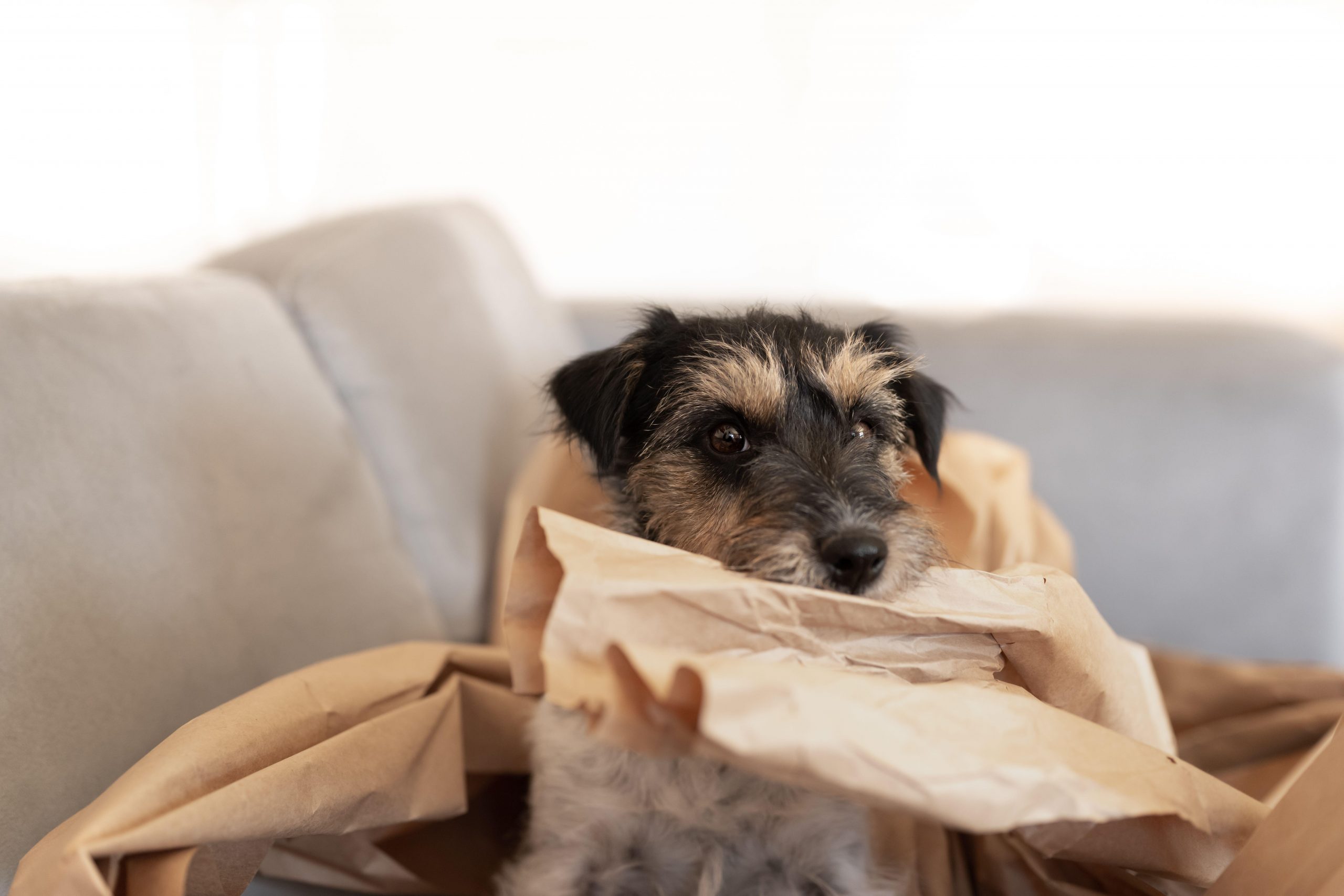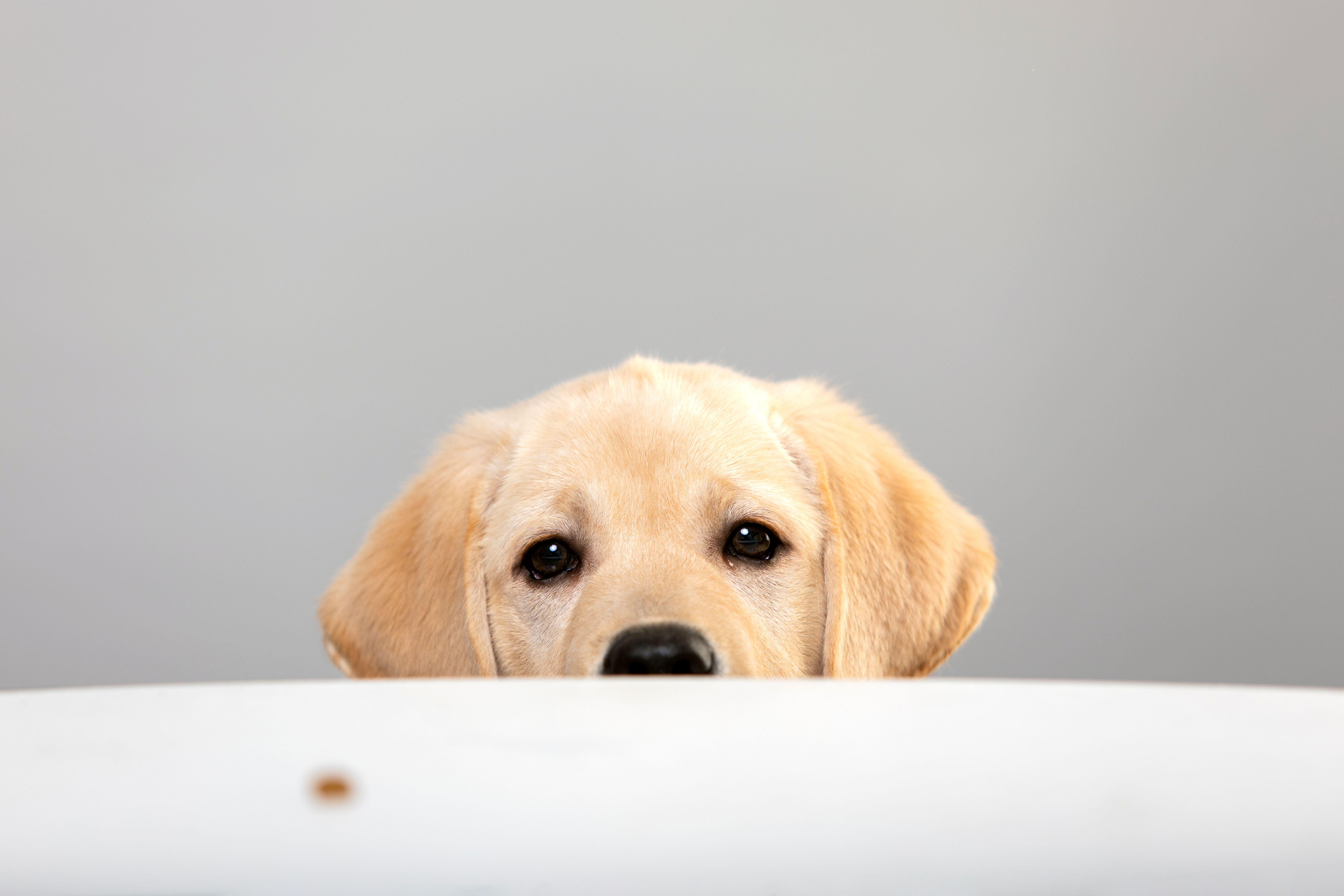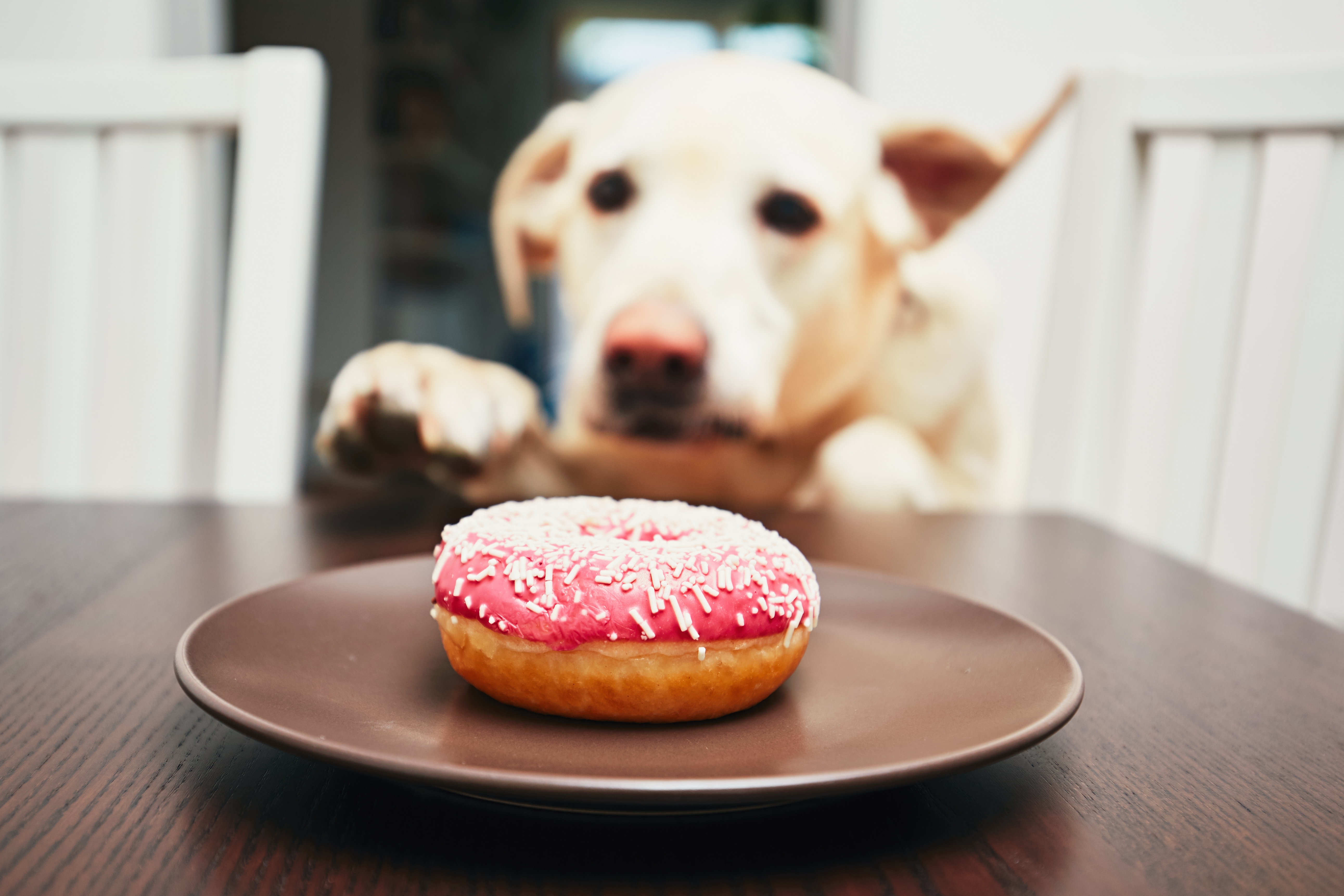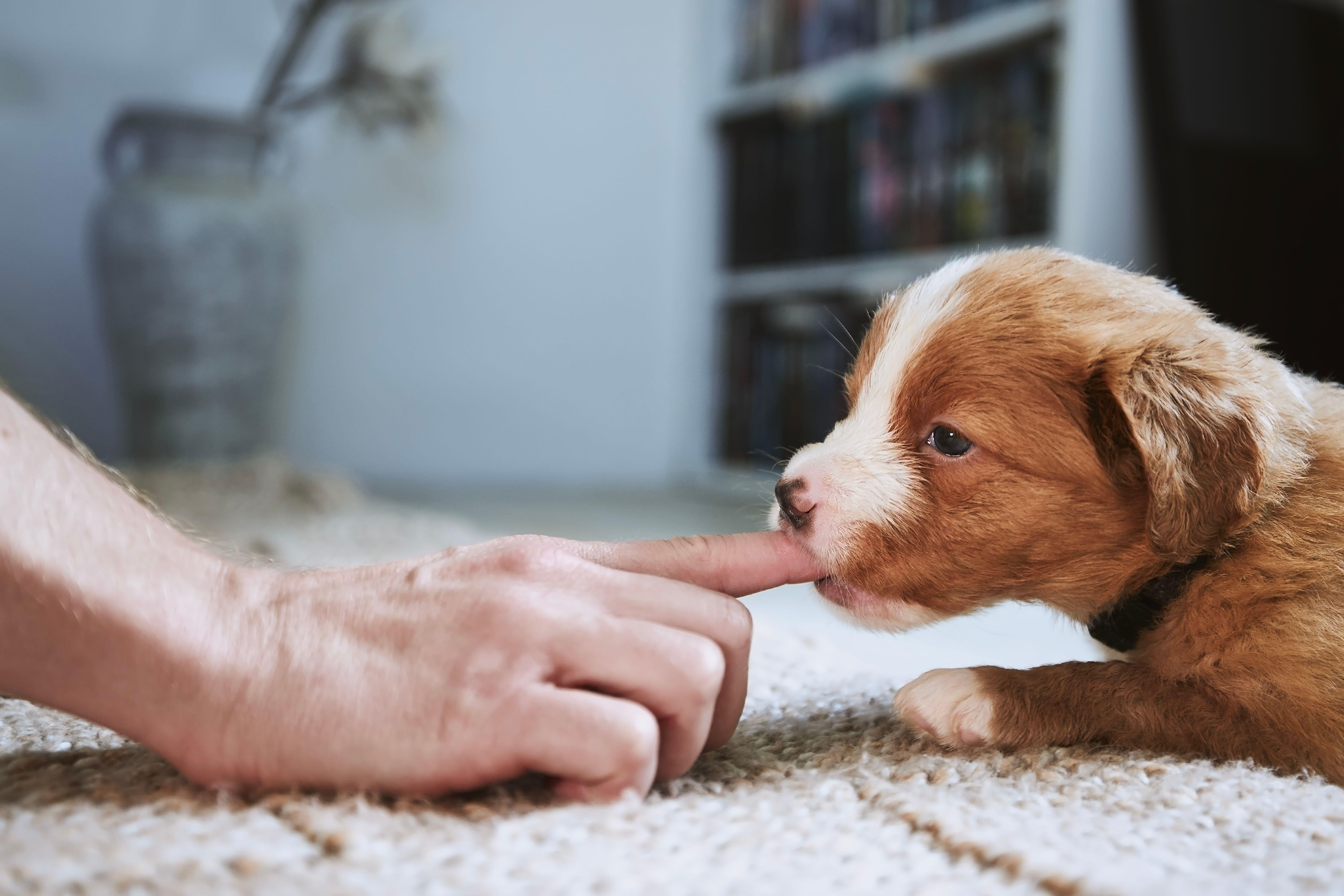How to stop resource guarding in dogs, by Ben Randall
Resource guarding is common in dogs — but it can be solved. Award-winning dog trainer Ben Randall explains how as he tackles this unusual canine dilemma.


In many ways, dogs are simple creatures and a lot of their behaviour — particularly those aspects that we find the most difficult to control — stems from the survival instincts their ancestors once developed living in the wild. Today's problem is about one of those behaviours: it's called resource guarding, or the tendency of some dogs to ‘guard’ their food, toys or bed.
For a dog thousands of years ago living in the wild, being protective of food, territory, and more would have been a key to survival. Yet when it comes to domesticated pets, it's a trait that is not at all desirable — not least because it could put you, your children or visitors to your home in a perilous situation. Resource guarding can get out of control and become extremely dangerous, especially if, say, you have a young child who drops food on the floor and goes to pick it up. The dog could potentially growl or bite the child, which would, quite rightly, have severe consequences for both you and your dog.
Thankfully the problem submitted by this week’s reader (via paws-for-thought@futurenet.com) hasn't gotten as serious as this yet, but it’s still an issue that is quite rightly troubling her. Here's her email:
‘Dear Ben, our dog, a sprocker spaniel, who is now two years old, has an obsession with sticking her head in bins and pulling out tissues or paper and shredding it into pieces. If we try to take it off her, she becomes very aggressive: resource-guarding. Even if she shreds and leaves it, then we try to collect the pieces, she becomes aggressive and won’t let us pick it up. Distracting her with a treat is a way to get the tissue/paper away from her, but isn’t this rewarding the behaviour?’
I see and hear of this issue quite a bit. Dogs can exhibit resource-guarding behaviour with all sorts of items — usually food or toys, but it can be anything that they consider to be ‘theirs’ and no one else’s. Although for me, as I use rewards-based training methods, which I’ve been developing for more than 20 years and that build a trust and a partnership with my dogs, I've never experienced this kind of problem. So why is it so common?
It’s because, just as you’ve suggested, you’ve used treats or bribery to get the dog to give up her prize, inadvertently rewarding your dog’s undesirable behaviour. This happens quite a lot with inexperienced dog trainers and pet owners. However, don’t worry, as, with a bit of effort on your part and by adopting these simple methods and techniques, you can solve this issue and start to build a better respect, bond and partnership with your dog, which is imperative for keeping everybody safe.

Five tips for stopping your dog resource guarding:
1. Get a bin that your dog cannot steal things from
This might sound obvious, but the first thing you must do is replace your bin for one with a safety (or a touch-bin) lid so your sprocker cannot get into it to steal paper.
2. Teach your dog the ‘leave’ command
I like to teach the leave command around meal times. I ask the dog to leave their food or a treat and then reward them, either with a piece of kibble, praise or by sending them to their food bowl, if they do as I ask. So, for example, ask the dog to sit, then put a treat (either a piece of kibble or their favourite ball, etc) on the floor and, after a period of time when she’s waited calmly, recall her to you (so that she has to come past the distraction or food) and reward her with a piece of food or praise — but not the treat that you’ve left on the floor. The key is using another piece of kibble or food from your own pocket, or praise: that makes it an earned reward for doing the right thing, not a bribe to elicit the correct response.
Exquisite houses, the beauty of Nature, and how to get the most from your life, straight to your inbox.

3. Keep practising until your dog understands the ‘leave’ command
Once you’ve practised this a few times, you're ready to move on. When your dog next gets hold of some paper and is chewing it in front of you, firmly give the ‘leave’ command and call the dog to you at the same time, whilst showing her the kibble reward in your hand. I would then ask her to sit and place the reward on the floor in front of her whilst you collect the paper and put it in the bin. Once you’ve closed the bin lid, release your dog to let her have the food reward or pick it up and give it to her from your hand.
4. Create scenarios to reinforce the ‘leave’ command
When you have instilled the leave command in the dog and started to build her trust, you can often simulate this scenario throughout the day by dropping or placing a distraction (whether it be food or a much-loved toy) that they want on the floor. The more you practice this, the better your dog will become at ignoring these distractions. Repetition is so important: would a dog learn to sit better if you asked it to do so once a week, or multiple times per day?
5. Extend the length of time that you ask your dog to wait
Reinforce and perfect all of this by teaching your dog to sit patiently at each of her meal times for extended periods of time whilst you are pottering about the kitchen or the garden. This will help to teach her great patience and control, and help her to be more calm and relaxed around all sorts of distractions, both in and out of the home. It will also encourage a closer, more trusting bond between you and your dog because your dog will start to see you as the person who allows them to have these rewards and she will think: 'If I work as part of a team with this person, then I will be rewarded, either with lavish praise or food.'
For more detailed advice about Ben Randall’s positive, reward-based and proven BG training methods, one-to-one training sessions, residential training or five-star dog-boarding at his BGHQ in Herefordshire, telephone 01531 670960 or visit www.ledburylodgekennels.co.uk. For a free seven-day trial of the Gundog app, which costs £24.99 a month or £249.99 a year, visit www.gundog.app/trial.

Ben Randall: Ask Country Life's canine agony uncle a question about your dog
Over the past two years our award-winning dog trainer Ben Randall has been sharing his advice with Country Life readers.

Credit: Getty Images
How to get your dog to walk to heel
Teaching your dog to stop pulling on the lead takes work, but it’s an important step in training that will

Credit: Alamy Stock Photo
How to stop your dog begging for food at the table, by expert trainer Ben Randall
Dogs begging for food around mealtimes can be adorable up to a point — but what happens when the charm wears

How to train your dog to leave things on command, by expert dog trainer Ben Randall
Teaching a dog to stop stealing food, clothes, TV remotes or anything else that they like to pinch can feel

How to stop your dog or puppy from biting when it's playing: Expert advice from Ben Randall
Playful behaviour is a great way for dogs to explore the world around them and make new friends — but

How to stop a dog getting jealous when you're playing with someone else's pet, by expert trainer Ben Randall
Dogs are loyal, faithful and delightful partners in your life — but they're no more immune to the green eyed
